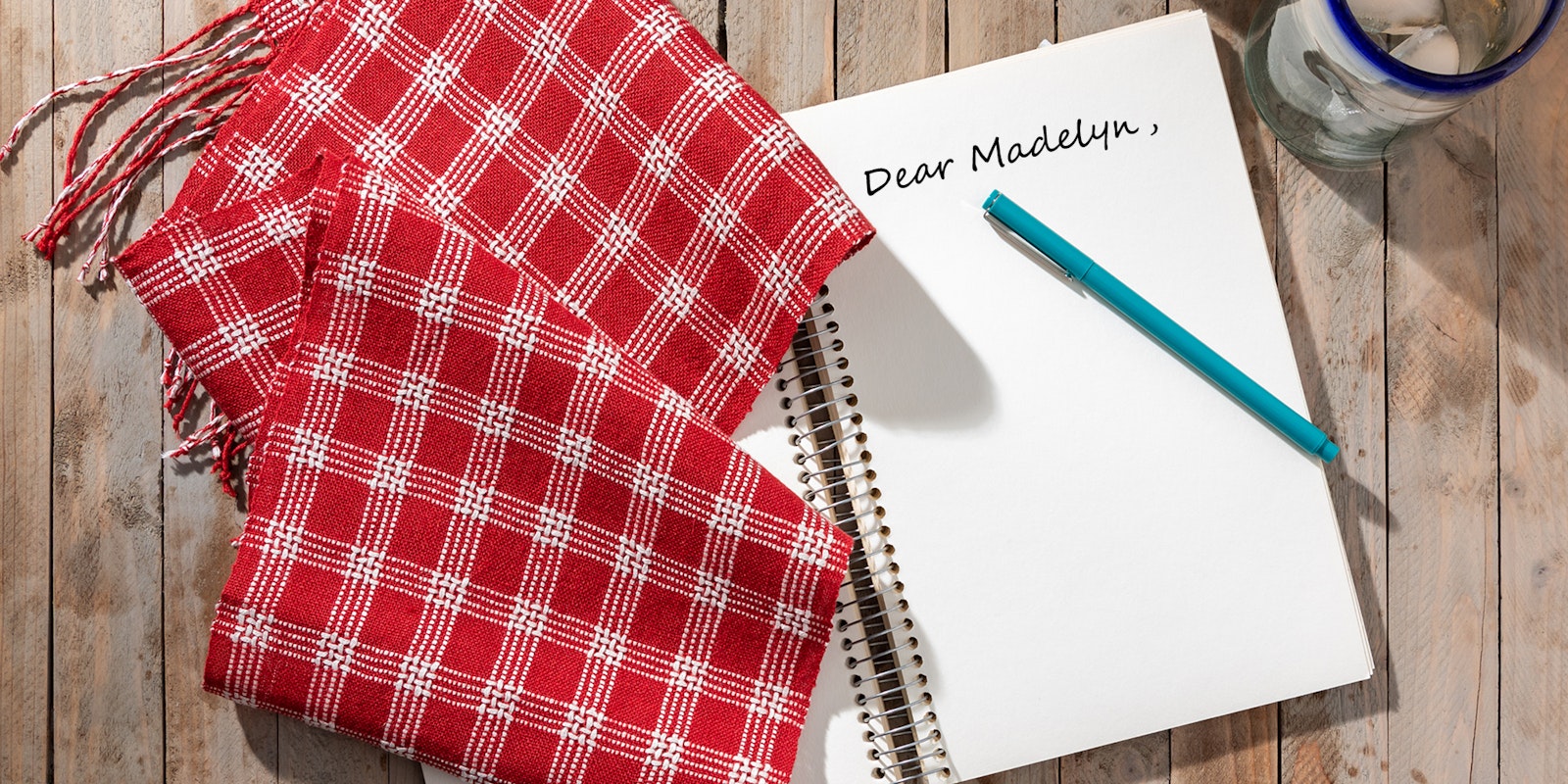Hi Madelyn,
A few years ago, I wove a piece of doublewide plain-weave cloth using Sugar ’n Cream worsted-weight yarn. When it first came off the loom, it looked normal, but when I wet-finished it, it developed a cross-hatching wrinkle pattern that couldn’t be ironed out, as if the yarn hadn’t shrunk consistently. It has retained that pattern ever since. I assumed it was a weird fluke caused by not using weaving yarn, possibly aggravated by the fact that I was doing a doublewidth technique.
More recently, though, the same thing happened on the tabby portion of a Bronson lace piece that I wove using 5/2 Valley Yarns mercerized cotton. Any idea why this happens and how to control when it does?
—John
![]()
Tracking in plain weave with 5/2 cotton
Hi John!
The effect that you have experienced is what is called “tracking.” Usually, it occurs with yarns that are slightly over-twisted and woven in a not-very-firm plain weave. When the fabric is washed, the yarns untwist (all in the same direction), puffing up and pulling in that direction a bit as they untwist. It is most common in singles yarns, which are twisted in only one direction, though it can happen with plied yarns, too, as they slightly unply. (Tracking can be thought of as a positive: Lynn Tedder took advantage of tracking to create the patterning in her plain-weave stole in a singles wool!)
![]()
Tracking in plain weave in singles wool (Four Season Stole by Lynn Tedder), September/October 1987, 35.
To remove unwanted tracking, handwash the fabric, remove from the rinse water, and roll in bath towels, squeezing out as much water as possible. Then press with a hot iron until dry. You might have to do this several times to remove the tracking (and there may be be some fabrics that always retain some evidence of it).
—Madelyn

